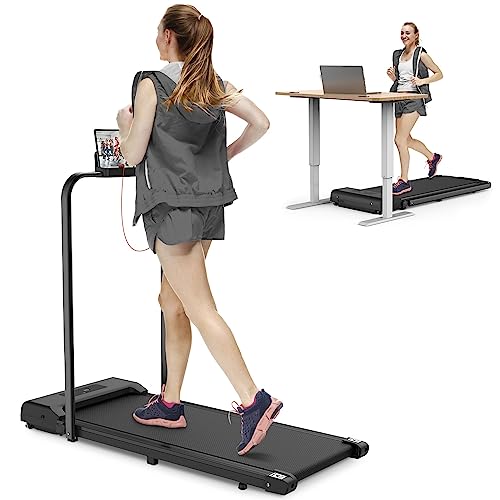buy-a-treadmill8745
buy-a-treadmill8745
The Reasons Gym Treadmill Is More Difficult Than You Imagine
Treadmills: A Comprehensive Guide to Understanding Their Functionality, Benefits, and Appropriate Selection
Introduction
Treadmills have become a staple in modern fitness regimens, both in homes and fitness centers worldwide. They use a convenient and effective way to keep cardiovascular health, increase endurance, and help in weight management. This short article explores the various types of treadmills, their advantages, features to think about when acquiring, and some FAQs to assist users in making informed choices.

Types of Treadmills
When it pertains to selecting a treadmill, it is important to comprehend the various types readily available in the market. Here are the main classifications:
1. Manual Treadmills
- Mechanism: These treadmills have a basic style and rely on the user’s efforts to move the belt.
- Pros: More budget friendly, quieter operation, no electrical energy required.
- Cons: Limited functions, might not provide the same series of workout intensity.
2. Motorized Treadmills
- Mechanism: Powered by a motor that drives the belt, permitting users to stroll or perform at a set speed.
- Pros: Greater range of speeds and slopes, equipped with numerous features such as heart rate monitors and workout programs.
- Cons: More costly and may require more upkeep.
3. Folding Treadmills
- System: Designed for those with limited area, these treadmills can be folded for easy storage.
- Pros: Space-saving, frequently motorized, versatile functions.
- Cons: May be less long lasting than non-folding models.
4. Commercial Treadmills
- System: High-quality machines developed for usage in health clubs and fitness centers.
- Pros: Built to hold up against heavy use, advanced features, typically consist of warranties.
- Cons: Pricey and not perfect for home use due to size.
5. Curved Treadmills
- System: A special style that permits users to move the belt using their own energy.
- Pros: Offers a more natural running experience, promotes better running kind.
- Cons: More expensive and can be noisier.
| Treadmill Type | Pros | Cons |
|---|---|---|
| Handbook | Cost effective, no electricity required | Limited features |
| Motorized | Variety of speeds, advanced functions | Upkeep required |
| Folding | Space-saving, typically motorized | May do not have sturdiness |
| Business | Built to last, professional-grade features | Expensive |
| Curved | Natural running experience, promotes excellent type | Higher price |
Advantages of Using Treadmills
Treadmills provide numerous benefits that can contribute to one’s total fitness goals. Some of these advantages include:
- Convenient Workouts: Treadmills enable users to work out indoors despite climate condition.
- Cardiovascular Health: Regular usage can improve heart health by increasing endurance and promoting healthy blood circulation.
- Weight Management: Effective for burning calories, which aids in weight reduction and management.
- Adjustable Workouts: Users can control speed, incline, and period to create tailored workout experiences.
- Safety: Treadmills supply a foreseeable surface, reducing the risk of falls compared to outside running.
- Multifunctional: Many treadmills included functions like heart rate displays, exercise programs, and even home entertainment systems.
Choosing the Right Treadmill
When selecting a treadmill, prospective buyers should think about several key elements:
Features to Consider:
- Motor Power: Typically measured in horsepower (HP), a motor strength of a minimum of 2.5 HP is suggested for severe runners.
- Belt Size: A longer and larger belt accommodates various stride lengths, providing convenience throughout workouts.
- Slope Settings: Adjustable slope functions simulate outside hill running and can increase exercise strength.
- Weight Capacity: Ensure the treadmill can support the user’s weight for security and durability.
- Console Features: Look for user-friendly dashboards, exercise programs, and Bluetooth compatibility for streaming music or other functions.
Budget plan Considerations
- Under ₤ 500: Entry-level manual treadmills suitable for casual walkers.
- ₤ 500 – ₤ 1,500: Mid-range motorized treadmills that offer more features and much better sturdiness.
- ₤ 1,500 – ₤ 3,000: High-end models with sophisticated innovation, bigger motors, and longer warranties.
- Over ₤ 3,000: Commercial-grade treadmills ideal for frequent use in health clubs or training facilities.
Regularly Asked Questions (FAQs)
1. How typically should I utilize a treadmill?
It is suggested to utilize a treadmill at least 3 to 5 times a week, incorporating different strength levels for best outcomes.
2. Can I slim down by utilizing a treadmill?
Yes, constant usage of a treadmill can contribute to weight loss, especially when combined with a balanced diet and strength training.
3. What is the very best speed to stroll on a treadmill for beginners?
A speed of 3 to 4 miles per hour is a suitable variety for novices. It’s important to begin slow and gradually increase pace as convenience and stamina enhance.
4. Do I require to utilize a treadmill if I already run outdoors?
Utilizing a treadmill can supply fringe benefits, such as controlled environments and varied workouts (slope, periods) that are not always possible outdoors.
5. How do I maintain my treadmill?
Routine upkeep includes lubing the belt, cleaning the deck and console, and examining the motor for ideal efficiency.
Treadmills are vital tools for those wanting to boost their physical fitness levels in a controlled and convenient way. With numerous types available, understanding their features and benefits is vital for making an informed purchase. By considering individual exercise requirements, area schedule, and spending plan constraints, individuals can find the most suitable treadmill that fits their lifestyle. Incorporating treadmill exercises into a balanced fitness regimen can result in enhanced health results and a satisfying exercise experience.

